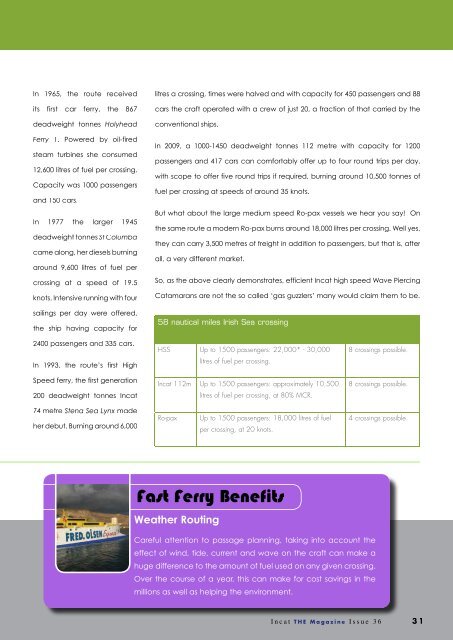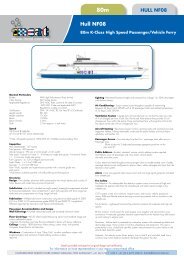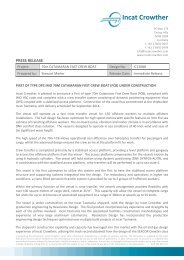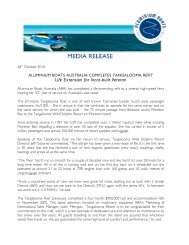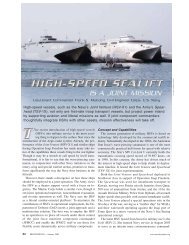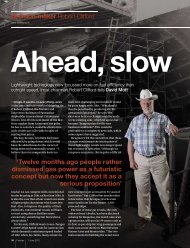US NAVY'S - Incat
US NAVY'S - Incat
US NAVY'S - Incat
Create successful ePaper yourself
Turn your PDF publications into a flip-book with our unique Google optimized e-Paper software.
In 1965, the route received<br />
its first car ferry, the 867<br />
deadweight tonnes Holyhead<br />
Ferry 1. Powered by oil-fired<br />
steam turbines she consumed<br />
12,600 litres of fuel per crossing.<br />
Capacity was 1000 passengers<br />
and 150 cars.<br />
In 1977 the larger 1945<br />
deadweight tonnes St Columba<br />
came along, her diesels burning<br />
around 9,600 litres of fuel per<br />
crossing at a speed of 19.5<br />
knots. Intensive running with four<br />
sailings per day were offered,<br />
the ship having capacity for<br />
litres a crossing, times were halved and with capacity for 450 passengers and 88<br />
cars the craft operated with a crew of just 20, a fraction of that carried by the<br />
conventional ships.<br />
In 2009, a 1000-1450 deadweight tonnes 112 metre with capacity for 1200<br />
passengers and 417 cars can comfortably offer up to four round trips per day,<br />
with scope to offer five round trips if required, burning around 10,500 tonnes of<br />
fuel per crossing at speeds of around 35 knots.<br />
But what about the large medium speed Ro-pax vessels we hear you say! On<br />
the same route a modern Ro-pax burns around 18,000 litres per crossing. Well yes,<br />
they can carry 3,500 metres of freight in addition to passengers, but that is, after<br />
all, a very different market.<br />
So, as the above clearly demonstrates, efficient <strong>Incat</strong> high speed Wave Piercing<br />
Catamarans are not the so called ‘gas guzzlers’ many would claim them to be.<br />
58 nautical miles Irish Sea crossing<br />
2400 passengers and 335 cars.<br />
In 1993, the route’s first High<br />
Speed ferry, the first generation<br />
200 deadweight tonnes <strong>Incat</strong><br />
HSS Up to 1500 passengers: 22,000* - 30,000<br />
litres of fuel per crossing.<br />
<strong>Incat</strong> 112m Up to 1500 passengers: approximately 10,500<br />
litres of fuel per crossing, at 80% MCR.<br />
8 crossings possible.<br />
8 crossings possible.<br />
74 metre Stena Sea Lynx made<br />
her debut. Burning around 6,000<br />
Ro-pax<br />
Up to 1500 passengers: 18,000 litres of fuel<br />
per crossing, at 20 knots.<br />
4 crossings possible.<br />
Fast Ferry Benefits<br />
Weather Routing<br />
Careful attention to passage planning, taking into account the<br />
effect of wind, tide, current and wave on the craft can make a<br />
huge difference to the amount of fuel used on any given crossing.<br />
Over the course of a year, this can make for cost savings in the<br />
millions as well as helping the environment.<br />
<strong>Incat</strong> THE Magazine Issue 36 31


